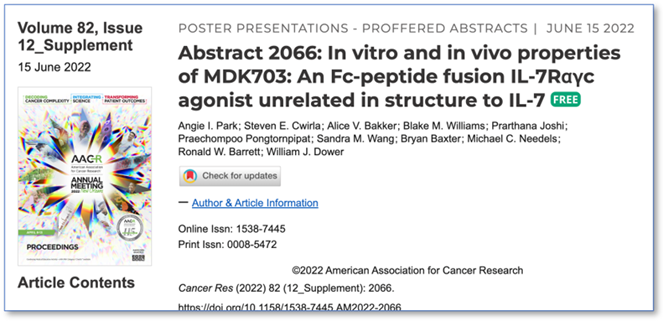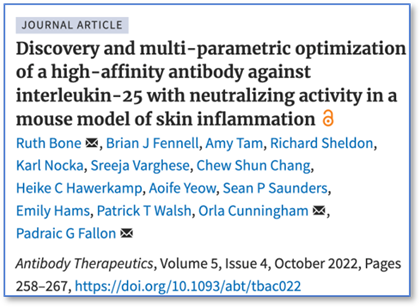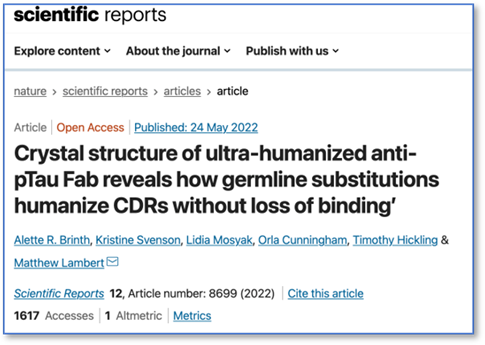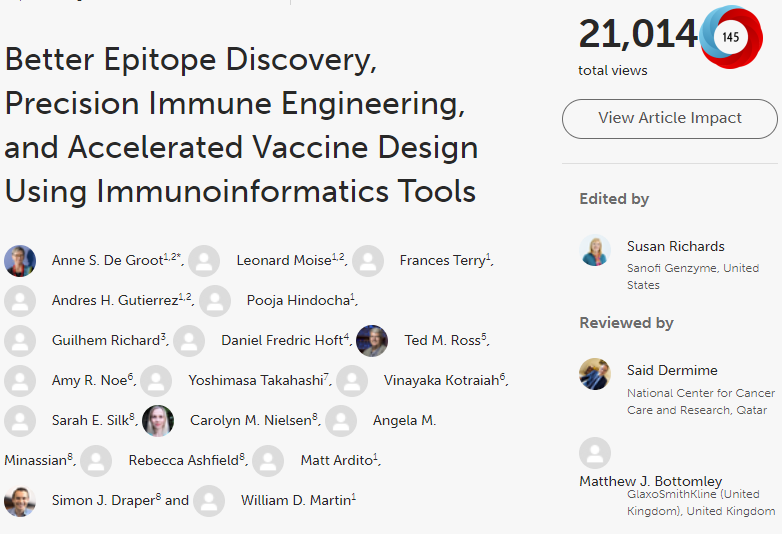We love to see the ISPRI toolkit referenced in scientific papers, and it seems that 2022 had several! This external validation is key to challenging our tools and helps us to understand user needs. A round-up of recent publications have been included below.
Are you working on a publication that references ISPRI? We encourage you to reach out and/or cite the most recent publications from the EpiVax team. This methods paper from 2020 is the most recent and comprehensive ISPRI paper from our group.

This publication comes from our colleagues at Halozyme Therapeutics, Inc. As you’ll read, the Halozyme team worked with EpiVax’s in silico immunogenicity risk assessment tools to quantify T cell epitopes present in their recombinant human hyaluronidase molecule, PH20.
The in silico assessment with ISPRI predicted relatively weak immunogenic potential for PH20. This finding was subsequently confirmed with a CD4+ T cell proliferation assay with PBMCs.
Printz, M.A., Sugarman, B.J., Paladini, R.D. et al. Risk Factors, Hyaluronidase Expression, and Clinical Immunogenicity of Recombinant Human Hyaluronidase PH20, an Enzyme Enabling Subcutaneous Drug Administration. AAPS J 24, 110 (2022). https://doi.org/10.1208/s12248-022-00757-3

This poster presentation from the recent American Association for Cancer Research meeting in June 2022 details research from our colleagues at Medikine, who are developing an Fc-peptide fusion construct, MDK-703. The abstract details their work on predicting the immunogenicity of their sequence using the EpiMatrix Protein and Cluster scores through partnership with EpiVax.
Angie I. Park, Steven E. Cwirla, Alice V. Bakker, Blake M. Williams, Prarthana Joshi, Praechompoo Pongtornpipat, Sandra M. Wang, Bryan Baxter, Michael C. Needels, Ronald W. Barrett, William J. Dower. In vitro and in vivo properties of MDK703: An Fc-peptide fusion IL-7Rαγc agonist unrelated in structure to IL-7 [abstract]. In: Proceedings of the American Association for Cancer Research Annual Meeting 2022; 2022 Apr 8-13. Philadelphia (PA): AACR; Cancer Res 2022;82(12 Suppl): Abstract nr 2066

This 2022 publication comes from a research team at Pfizer, Trinity College Dublin, and UltraHuman Eight working on optimization of an antibody against IL-25. The “EpiVax Score” shown in Table 2 is actually the EpiMatrix score for the sequences!
As you’ll see in the paper, the authors screened their humanized sequences with EpiMatrix and compared those scores to that of the parental sequence. The predicted low immunogenicity, along with other factors detailed in Table 2, guided the selection of a final humanized molecule..
Ruth Bone, Brian J Fennell, Amy Tam, Richard Sheldon, Karl Nocka, Sreeja Varghese, Chew Shun Chang, Heike C Hawerkamp, Aoife Yeow, Sean P Saunders, Emily Hams, Patrick T Walsh, Orla Cunningham, Padraic G Fallon, Discovery and multi-parametric optimization of a high-affinity antibody against interleukin-25 with neutralizing activity in a mouse model of skin inflammation, Antibody Therapeutics, Volume 5, Issue 4, October 2022, Pages 258–267, https://doi.org/10.1093/abt/tbac022

This 2022 publication in Scientific Reports comes from authors at Pfizer working on humanization of an anti-pTau Fab. The authors used EpiMatrix to assess predicted T cell epitope content before and after humanization to confirm that the humanized construct had lower predicted epitope content and lower immunogenicity.
Brinth, A.R., Svenson, K., Mosyak, L. et al. Crystal structure of ultra-humanized anti-pTau Fab reveals how germline substitutions humanize CDRs without loss of binding’. Sci Rep 12, 8699 (2022). https://doi.org/10.1038/s41598-022-12838-6

